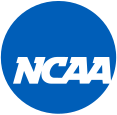Applying to college differs for athletes

Applying to college is not easy. It’s a demanding process, one that many WHS students find unbearable. But, for student athletes looking to play at the collegiate level, the college destination has a different path, riddled with extra steps.
One student athlete who has recently finished this process is WHS senior Julia Romano, who committed to Lafayette College for softball this past August.
“I would go to college camps and e-mail coaches,” Romano said. “Coaches that showed more interest would come to my tournaments over the summer. That’s how it was my freshman, sophomore and majority of junior year.”
WHS junior Hank Shapiro has had a similarly intensive process. Shapiro, the quarterback of the WHS varsity football team, makes video highlights from games, attends college clinics and markets himself during football showcases in hope of catching a college coach’s attention. So far, he has received an offer from Lehigh University.
“Selling yourself is the hardest part,” Shapiro said. “Going up to coaches and trying to get them to buy into what you have and your skillset.”
In addition to filling out expected college forms, Divison I or Division II athletes must complete forms for the NCAA Eligibility Center. Akin to the Common Application, but for athletes, it determines NCAA eligibility to compete in the NCAA according to academics and amateur status. Athletes must have a 2.3 GPA on a sliding scale and complete 16 core academic courses to be eligible to play at the collegiate level.
Despite the fact that prospective college athletes have extra steps in the recruitment process, there are several benefits that come along with it as well.
A small degree of academic leniency is given to some athletes who commit to schools. This is a fair trade-off according to WHS guidance counselor Andrew Buckner.
“Although academically [some athletes] may not be in that middle 50th percentile of an academic profile, they’ve done something athletically that the school deems valuable,” Buckner said. “The student who spent 1,000 hours during a season training all year long to be a top recruit, how could they have done academically if they switched those hours to academics?”
Student athletes also get a break in applying to schools, as they only apply to the one they will likely compete for. “I see a lot of my friends applying to all these different schools and they have to do all these different supplements,” Romano said. “But I only have to apply to one school.”
Despite extra hours networking, sifting through film highlights and training, athletes are not exempt from any steps in the process, other than filling out fewer applications. They are still required to complete school’s supplements, and submit test scores and GPAs. But, the prospect of finally finding a team to compete on seems to make up for the extra hours of headaches and troubles.
“I’ve gone through a lot of stress,” Romano said in reference to her commitment journey. “I’ve worked a lot on my softball skills and [worked] hard in the classroom too. But it makes me happy to say I’m committed to a D1 school.”
